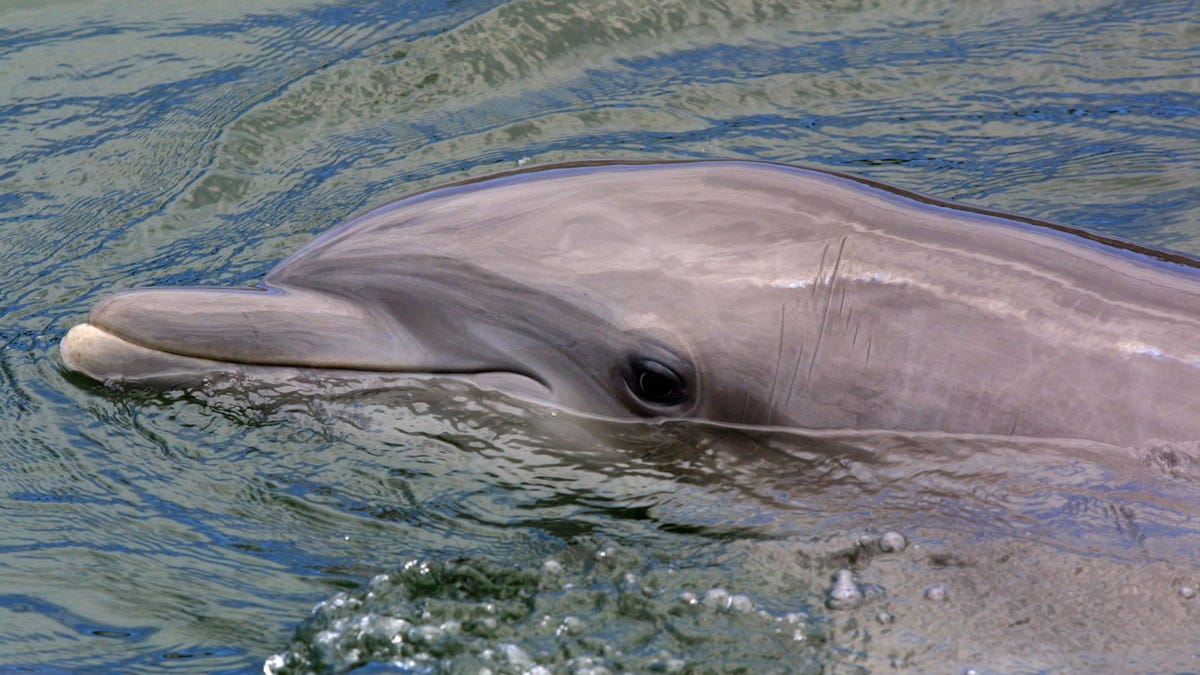
Humans and dolphins have even more in common than we might have thought, new research suggests. Biologists say they’ve found clear anatomical evidence that female dolphins have a fully functional clitoris that helps them experience pleasure during sex—just as it does for humans. The findings may one day help scientists trace back the evolutionary origins of the sexual organ and sex in general.
Lead author Patricia Brennan, an assistant professor of biological sciences at Mount Holyoke College in Massachusetts, and her team have been studying the evolution of genitals in all sorts of vertebrate animals. More recently, they turned their attention to dolphins, the marine mammals known for their playful and eerily human-like nature at times (in ways good and bad).
“Dolphins have vaginal folds, and we were studying these folds to try to figure out their function and why they are so diverse across species,” Brennan told Gizmodo in an email. “As we dissected all these vaginas, the clitoris was obviously very well developed, so we decided to investigate how much we knew about it.”
Brennan and her team were able to closely look at the clitoral tissue of 11 bottlenose dolphin females that had died of natural causes. Aside from studying the surface physical features of the clitoris, they also examined the presence of nerve endings, muscles, and blood vessels. Everything they found pointed to the same thing: a fully working funmaker.
For one, Brennan noted, the dolphin clitoris is relatively large and filled with plenty of erectile tissue and blood vessels that allow it to engorge quickly. Their clitoris also grows in size as a dolphin matures, much as it does with human puberty, and it’s surrounded by a band of connective tissue that helps it keep its shape, indicating that it’s a valuable body part. And perhaps most importantly, the dolphin clitoris is chock full of nerve endings right underneath relatively thin skin, along with other sensory receptors—both of which, Brennan says, “are likely involved in a pleasure response like they are in humans.”
It’s no secret that some species of dolphins seem to engage in sexual behaviors outside of the strict criteria and timing needed for reproduction (even with humans, according to some eyewitness accounts). It’s widely thought that these dolphins use sex as a social lubricant. During mating, they appear to engage in copious amounts of foreplay before the brief period of penetrative sex. Both male and female dolphins are thought to masturbate, and there have been reports of homosexual behaviors among both sexes, including female dolphins rubbing each others’ clitorises using their snouts or flippers. So it stands to reason that the clitoris would play a key role in all this fun-having. But the authors say theirs is the first anatomical research to clearly demonstrate this purpose.

“While it may seem obvious that animals that engage in as much sexual behavior as dolphins do should be deriving pleasure from this behavior, we can now use morphological features of the clitoris to show that they actually do,” said Brennan. Though Brennan and her team have previously discussed this research, their peer-reviewed study has now been published in Current Biology.
Dolphins aren’t the only animal besides humans that appear to enjoy sex and to do it for non-reproductive reasons; many of our primate relatives seem to as well. But the fact that the dolphin clitoris is so similar to the human version, despite dolphins and humans probably being 95 million years apart in the evolutionary family tree, could suggest that the organ’s origins go way, way back. And given the risks that can come with sex, it makes sense that pleasure would evolve as a motivating factor.

Studying the sex lives of animals is no easy task. But Brennan and her colleagues point out that the nature of female sexuality and the clitoris has long been understudied in animals and in humans. Among other things, this lack of knowledge hampers our knowledge of how sex came to be in the first place.
“Sex is central to evolutionary processes, and our ignorance of female sexuality results in an incomplete understanding of how sex actually works in nature.” Brennan said. “You need two to tango, as the saying goes!”
Brennan’s team plans to keep studying the evolution of genitals in various animals. That list of projects will continue to include dolphins, but also snakes, alpacas, and even alligators.





